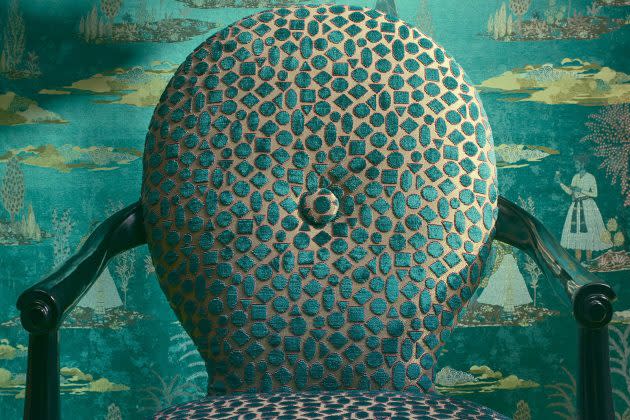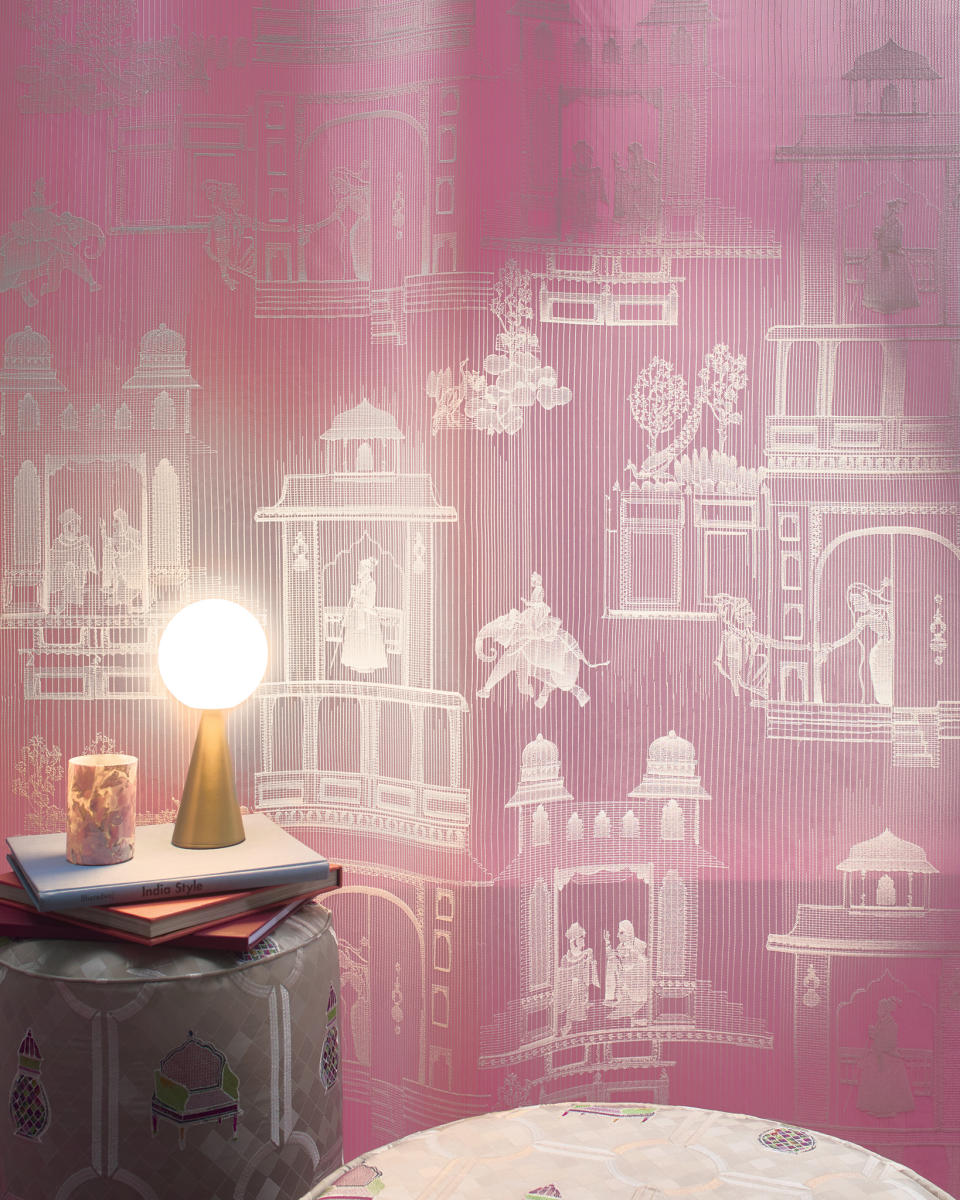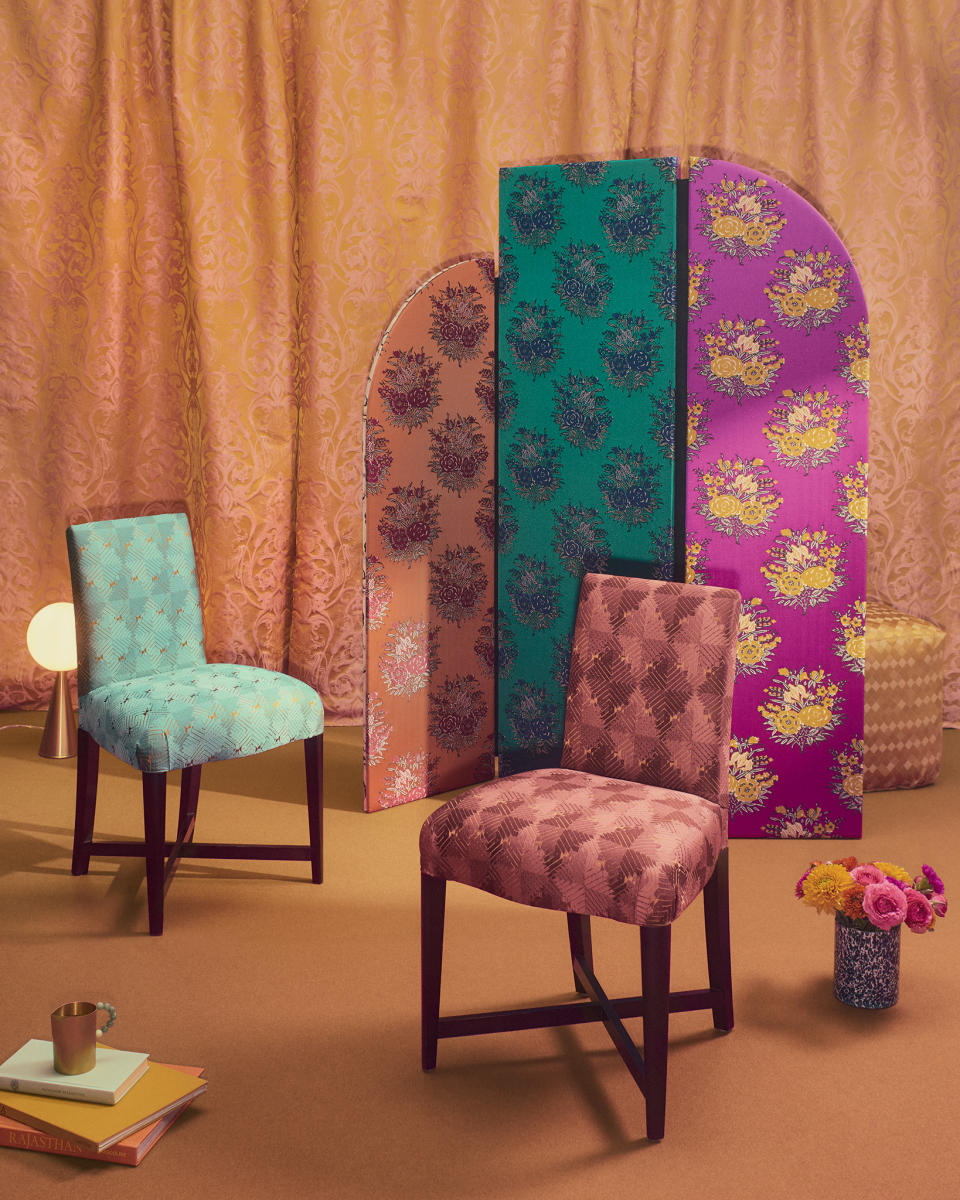Rubelli Releases Made in India Collection

MILAN — There are some intricate techniques that exist far afield for Rubelli, the famed Venetian textile maker famous for its hand-loomed soprarizzo, or chiseled, silk velvet. To unlock the potential of India’s well-kept artisan traditions, Rubelli turned to its longtime partner, an India-based firm with which it has been collaborating over the past 25 years, to produce something totally fresh.
While various Rubelli collections in the past included items inspired by India, this is the first full collection that is dedicated to Indian themes. “Spice Dream” includes a total of 14 jacquards and embroideries ranging from figurative to floral, from classic to geometric designs. The array was unfurled at the Rubelli showroom in Milan Tuesday.
More from WWD
“It’s our cruise collection,” enthused marketing director Loredana Di Pascale at the showcase. Running her fingers over the small geometric shapes of the Velvet Jewel fabrics, she pointed out that this sort of artisan craftsmanship, once widespread in Italy, remains well-preserved in India.
The Holi texture, for example, draws inspiration from the artisanal fabrics crafted, especially in the Bhagalpur region, where silkworms are raised, and weavers still hand-weave textiles. The name “Holi” refers to the Hindu festival of colors, a celebration that takes place during the spring equinox.
The Sheesh Mahal, for example, was inspired by the mosaic of colorful mirrors that decorate the Kench Mandir (the “Temple of Mirrors”) in the city of Indor. The two embroidered motifs — an armchair and a vase — add a refined touch of color to the elegant ivory checkerboard they are set in.

While India represents a top market for the firm, the idea was to bring this sort of Indian expertise to the international market.
“It arose as an opportunity for us to develop designs, weaves and quality at the most prestigious textile furnishing company, working directly with their technicians, all highly specialized and with a very creative staff. The director is a textile artist. It was therefore a way to expand the product offering,” chief executive officer Nicolò Favaretto Rubelli told WWD.
In recent years, Rubelli which was founded in 1889 has been working on incorporating contemporary style into its orbit and attracting new generational consumers.
In January it tapped Formafantasma as its creative director in September of 2023. Its first task was reinterpreting niche brand Kieffer, which joined Gruppo Rubelli in 2001. In April, Rubelli unleashed the first collection of wallpapers created for Rubelli by Luke Edward Hall. Named “Parade,” the collection is composed of designs inspired by ancient Greece and Rome that were originally hand-sketched with Hall’s elegant yet cartoonish flair.
Rubelli’s Home division was launched in 2015. The group, however, has built a rapport with Italian designers over the decades. The late Gio Ponti designed the house’s Punteggiato velvet, which remains a successful component of its fabric lineup to this day. In more recent years, the house has worked with the likes of renowned interior designer Marco Piva, architectural designer Cristina Celestino, photographer Brigitte Niedermeier and American architect Peter Marino. The latter created three-silk damask fabrics that echoed the work of 16th century painter Titian in 2019.

Best of WWD


